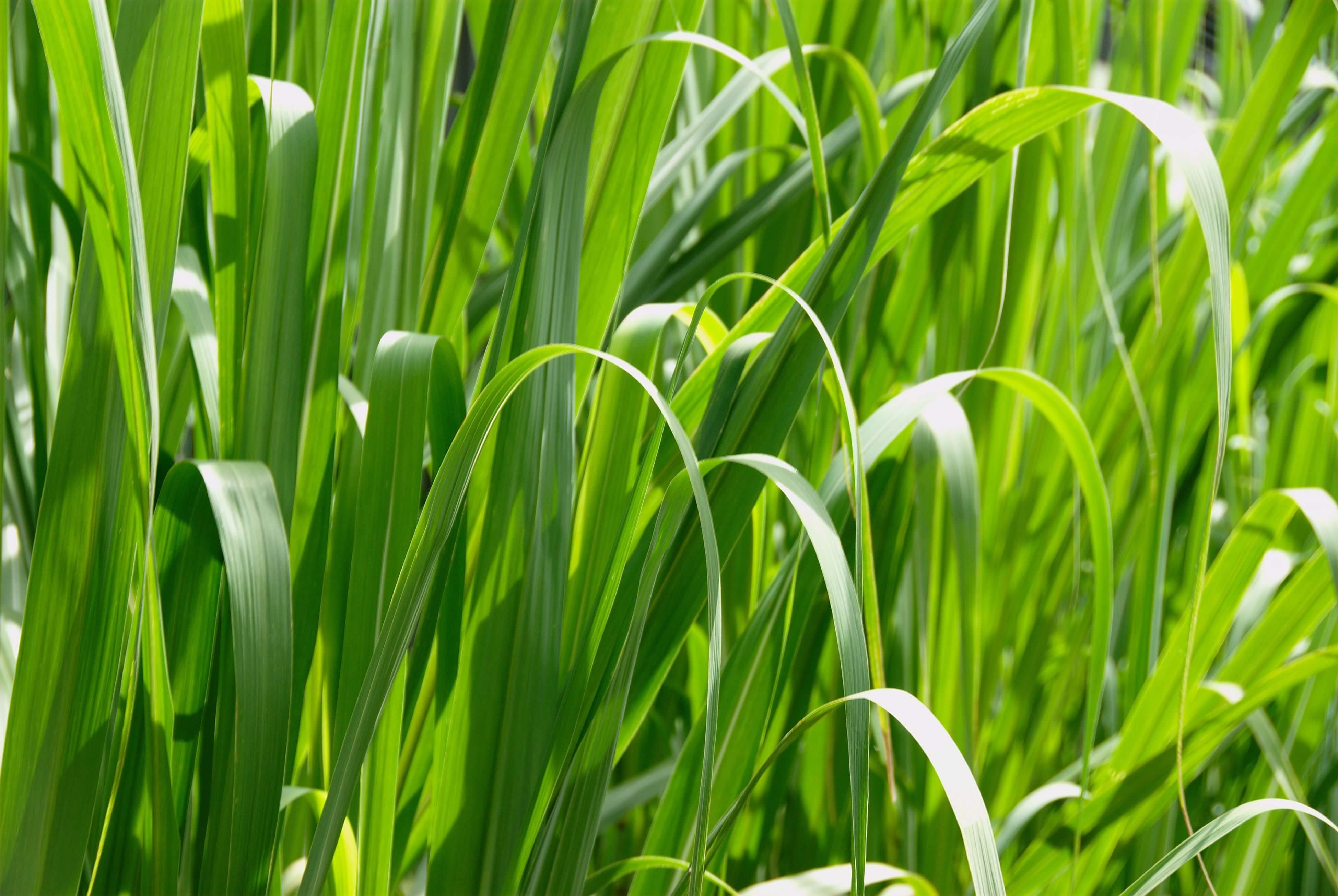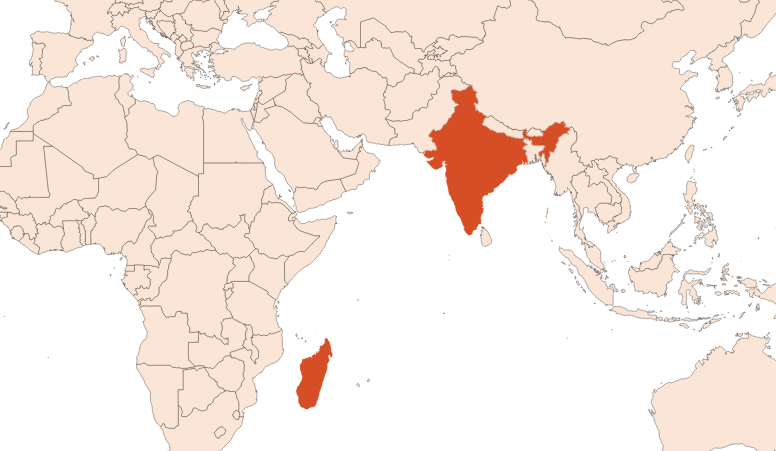Palmarosa EO
Naturelle
Floral > Rosy > Geranium > Green

Crédits photo: ScenTree SAS
Latin name :
Cymbopogon martinii (Roxb.) J.F. Wats.
Botanical profile :
Le palmarosa est une plante herbacée appartenant à la famille des Poacées et au genre cymbopogon comme les lemongrass et les citronnelles
Geographic origin :
Originally from Indonesia and India, Palmarosa is now produced in India, Java Island (Indonesia), Brazil and Central America
Chemotypes :
Le genre Cymbopogon (nom latin venant du grec kymbe, signifiant bateau, et pogon, signifiant barbe) comprends près d’une soixantaine d’espèces. Voici ci-dessous une liste des espèces utilisées en parfumerie.
Les citronnelles :
• Cymbopogon nardus (L.) Rendle – Citronnelle Ceylan HE, présent principalement au Sri Lanka
• Cymbopogon winterianus Jowitt – Citronnelle Java HE, présent principalement en Indonésie.
• Cymbopogon pendulus – Citronnelle Jammu HE, présent principalement en Inde.
Les lemongrass :
• Cymbopogon citratus (DC.) Stapf – West indian lemongrass HE
• Cymbopogon flexuosus (Nees ex Steud.) W.Watson – East indian lemongrass HE
Le palmarosa :
• Cymbopogon martinii (Roxb.) J.F. Wats. – Palmarosa HE, présent principalement en Inde, en Indonésie ainsi qu’au Brésil. Son odeur est beaucoup plus rosée que les autres espèces, notamment du fait de sa concentration importante en géraniol.
Les citronnelles :
• Cymbopogon nardus (L.) Rendle – Citronnelle Ceylan HE, présent principalement au Sri Lanka
• Cymbopogon winterianus Jowitt – Citronnelle Java HE, présent principalement en Indonésie.
• Cymbopogon pendulus – Citronnelle Jammu HE, présent principalement en Inde.
Les lemongrass :
• Cymbopogon citratus (DC.) Stapf – West indian lemongrass HE
• Cymbopogon flexuosus (Nees ex Steud.) W.Watson – East indian lemongrass HE
Le palmarosa :
• Cymbopogon martinii (Roxb.) J.F. Wats. – Palmarosa HE, présent principalement en Inde, en Indonésie ainsi qu’au Brésil. Son odeur est beaucoup plus rosée que les autres espèces, notamment du fait de sa concentration importante en géraniol.
Extraction process :
Palmarosa is an herb with long flat leaves that can reach up to three meters high and contains the essential oil of the plant. The propagation of a crop is made by a regular sowing of the seeds. The cultivation of the plant must be done on a very well drained soil.
The harvest begins just after flowering, after a few months of cultivation. Native tribes take care of the harvest from March to November. After the harvest, the leaves are dried in the sun for a week to improve the extraction yield: drying them allows to concentrate the volatile molecules, without degrading or modifying the smell of the plant. The extraction is done by steam distillation, under high pressure of water and the essential oil is collected by decantation, in the receptacle at the outlet of the refrigerant.
The yield of the extraction of the plant varies between 0.5 and 1.2%.
The essential oil of palmarosa is often used for the extraction of natural geraniol.
The harvest begins just after flowering, after a few months of cultivation. Native tribes take care of the harvest from March to November. After the harvest, the leaves are dried in the sun for a week to improve the extraction yield: drying them allows to concentrate the volatile molecules, without degrading or modifying the smell of the plant. The extraction is done by steam distillation, under high pressure of water and the essential oil is collected by decantation, in the receptacle at the outlet of the refrigerant.
The yield of the extraction of the plant varies between 0.5 and 1.2%.
The essential oil of palmarosa is often used for the extraction of natural geraniol.
Major Components :
Geraniol (74 - 94%)
Geranyl Acetate (5 - 20%)
Geranyl Formate (5 - 15%)
Linalool (2 - 4%)
Nerol (≈1%)
Geranyl Acetate (5 - 20%)
Geranyl Formate (5 - 15%)
Linalool (2 - 4%)
Nerol (≈1%)
- Uses in perfumery :
- It is an economical alternative to rose and Geranium EO. Also give a interesting green facets
- Other comments :
- India is the largest palmarosa farmer, particularly in the southern Himalayan regions and at the Afghan border.
Palmarosa essential oil is widely used for the purpose of extracting natural Geraniol. Its level of Geraniol depends on the quality of the phosphate removal of the Geranyl Phosphate present in the plant and the rate of conversion of Geraniol to Geranyl Acetate and Geranial during the processes that take place.
Besides its citral and green smell, the palmarosa gets its name from its particular pinkish smell. - Volatility :
- Heart
- Appearance :
- Liquide jaune à jaune pâle
- Stability :
- The terpenes identified in this raw material can polymerize when they are oxidized
The esters identified in this raw material can form their corresponding acid in stability tests - Price Range :
- €€
- Aromatherapy :
Informations provided below are taken from reference works in aromatherapy. They are given for information purposes only and can not constitute medical information, nor engage the responsibility of ScenTree.
Palmarosa is known for its antibacterial, antifungal, antiviral and cardiotonic properties. It is indicated in case of bronchitis, to relieve pain during childbirth, enteritis (inflammation of the small intestine) and viremia (replication of a virus).

Crédits photo: ScenTree SAS
- EINECS number :
- 283-461-2
- FEMA number :
- Donnée indisponible.
- Allergens :
- Geraniol - Linalool - Citral - Farnesol - D-Limonene
- IFRA :
- This ingredient is not restricted
To learn more about IFRA's standards : https://ifrafragrance.org/safe-use/library
ScenTree is solely responsible for the information provided here.





